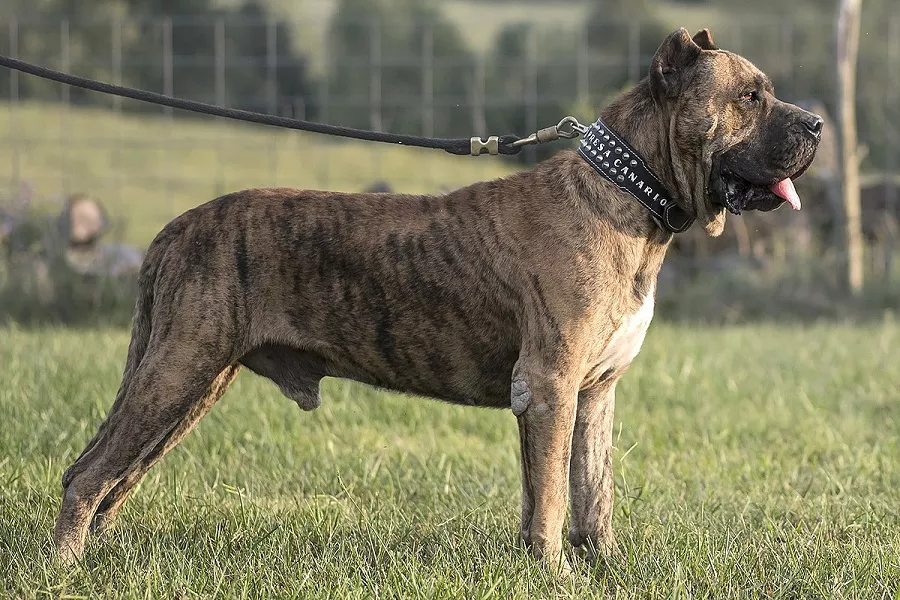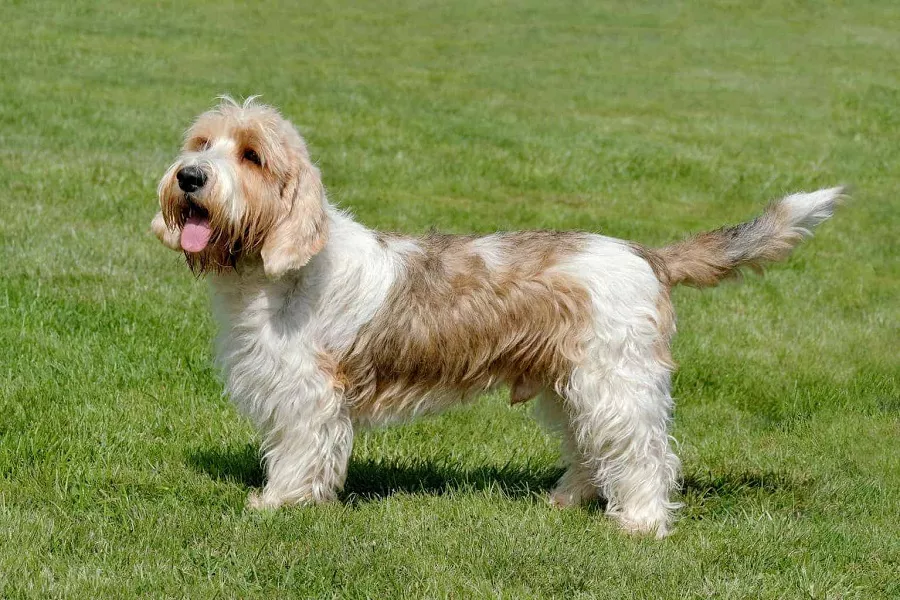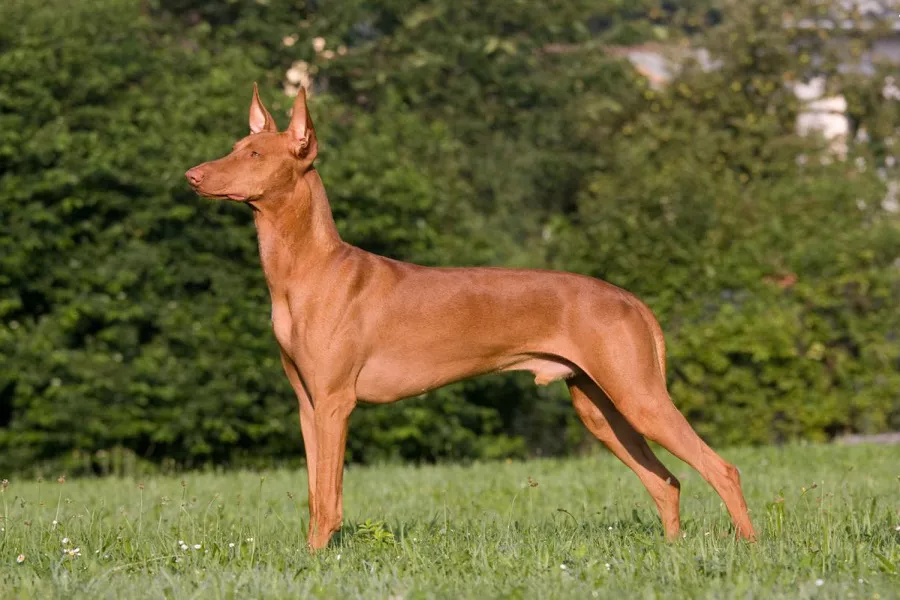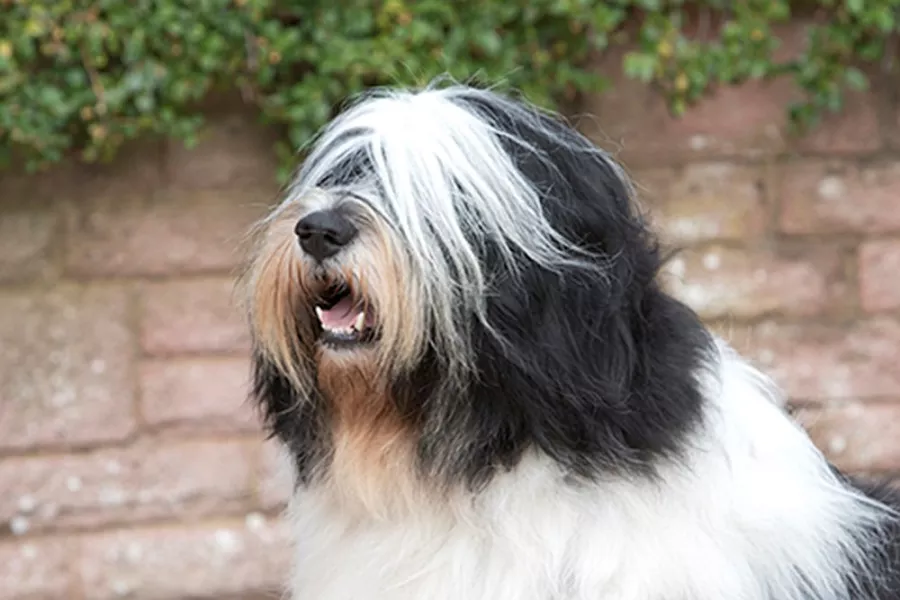What is a presa de canario?
The presa de canario is a dog breed developed from fighting dogs. Its ancestors may include the locally endangered Badino Majero. The Canary is a typical fighting dog with thick skin, strong bones, well muscled, large head and abnormally hypertrophied jaw muscles. By the 1960s, the breed was on the brink of extinction, but was later rescued by Dr. For many years, it has been rated as the dog breed that hurts people and causes the most deaths by many countries, and is banned by most countries.
What does the presa de canario look like?
Body shape: The height of the male dog is 60 to 65 cm, the height of the female dog is 56 to 61 cm, and the lightest weight is 50 kg for the male dog and 40 kg for the female dog. Thick skin, strong bones and strong muscles
Head: The head is large and appears firm and covered with loose skin. The shape is slightly cuboid. The ratio of skull to snout length is 6:4. The width of the head is 3/5 of the length. Skull: The top of the head is convex and curved, but the front is flat. The cheekbones are clearly arched, with well-developed muscles attached, but the muscles are not prominently prominent.
Ears: Medium in size, well spaced, covered with short-cut fine coat. If the ears are drooping, they fit snugly against the cheeks, and if they are folded, they rest on the head in a “rose ear” shape. The base of the ear is slightly above the level where the eyes are located. The ears are set very high, sitting on the skull without the typical regular spacing, and if clipped, the ears are erect.
Eyes: Slightly oval in shape, medium to large in size, well-opened, slightly “eight” shaped, but not sunken or protruding. The eyes are compact and dark in color, with no drooping eyelids. Color varies from medium to dark chestnut to match coat color. Never light-colored eyes.
Nose: The nose is shorter than the skull, making up about 40% of the entire head. The width is 2/3 of the skull. Wide at the bottom, tapering slightly forward. The nose line is straight.
Chin: The forehead turns sharply but not rigidly, and the line of the skull is parallel or nearly parallel to the line of the nose.
Limbs: The neck is thick and muscular, the chest is wide and deep, and the buttocks are slightly upturned.
Paws: cat feet, round toes, not too tightly closed between the toes. The pads are well developed and black. The toenails are dark in color, in time to match the coat color, and white toenails are also unwelcome.
Tail: Thick at the base, tapering towards the tip. In movement, the ascent takes the shape of a saber. No curl or tip bend pointing back. At rest, sag straight and tip slightly curled
Coat: Short, thick, very smooth, without undercoat (sometimes the undercoat can be found on the neck and buttocks and has a rough touch.) The coat is short and fine on the ears, slightly longer on the shoulders and on the top of the buttocks. The coat is short and coarse. Coat color is generally tawny with various markings, sometimes white markings also appear.
Coat Color: There are light tan, red markings and black markings and other colors.
Gait: Agility, flexibility and long stride. The tail is set low in activity and raised only above the topline. Both head and tail are raised when focused.
Nursing: Canary dogs can adapt to urban life, are resistant to heat, do not need frequent grooming, cannot get along with other dogs, and are not easy to train.
presa de canario living habits
Energetic, with typical bulldog characteristics. High degree of excitement, easily excited. Positive attitude and loyalty. Appears calm and focused, especially when guarding and driving cattle. Nervous balance and sufficient self-control. The cry was serious and deep. At home, he is elegant and gentlemanly, very loyal to his master, and suspicious of strangers. The expression is confident, noble and somewhat indifferent. When he sees something suspicious, his expression is firm and focused.
presa de canario rearing
As the humidity decreases and the temperature drops, older dogs who have spent a summer indoors also need to do moderate exercise outdoors.
Appetite also gradually returns, so it is very necessary to do a small amount of exercise. Old dogs who don’t like sports can also let them play with toys.
Prevent colds after being caught in the rain (autumn)
Older dogs are weaker than adult dogs. After getting wet in the rain, not only are they prone to catch a cold, but they also take longer to recover. So after a walk in the rainy day, you should wipe it with a towel in time, and use a hair dryer to dry your body.
Do not reluctantly love dog sports in the cold season (winter)
Winter, which I liked when I was young, can also become miserable in old age. If your dog doesn’t want to go out, don’t force it to exercise.
In addition, going out from a warm room and suddenly exposed to cold outside air, dogs with weak airway function will find it difficult to breathe. Therefore, before going out, stay for a while in a place with no heating and low temperature at the door, and wait until you get used to the cold air before going out.
1 hour air change
Heated rooms tend to dry out, and over-drying can cause static electricity, damaging the dog’s coat, throat and nose mucous membranes. So keep changing the air every hour, and open the windows to let in fresh air.
Elderly pet dogs are particularly intolerant of cold. If you leave it alone at home, turn off the heating and prepare a pet radiator.
Reminder: For more knowledge about dog feeding, dog training, dog grooming, dog breeding, please pay attention to: mtedr.com, providing you with different kinds of dogs.


























